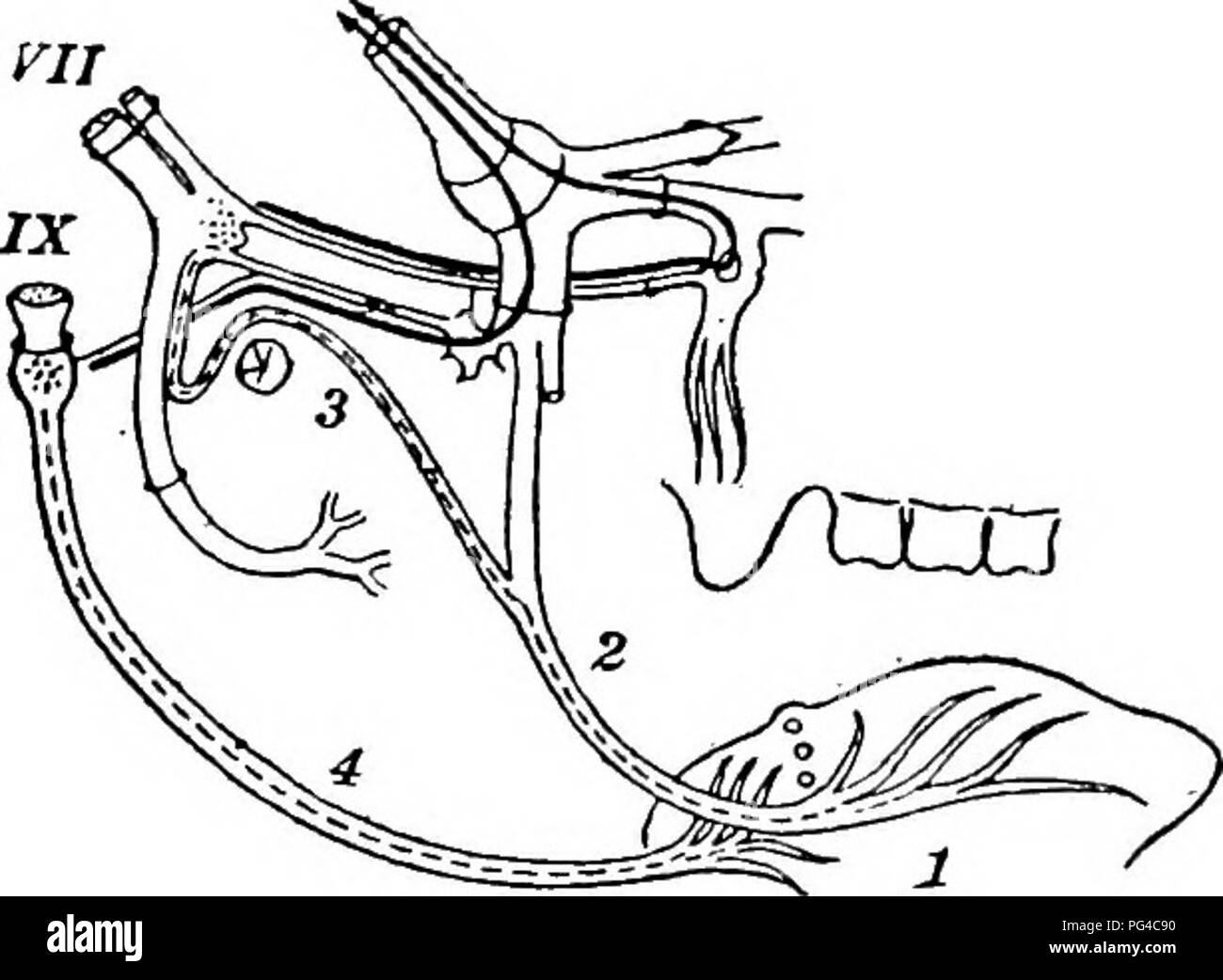. Smell, taste, and allied senses in the vertebrates . Senses and sensation; Vertebrates. 126 SMELL, TASTE, ALLIED SENSES the temporary disturbance in taste, a condition that was supposed to be permanent by Krause, to the effect of the degenerating trigeminal fibers on the adjacent gusta- tory fibers, an effect that disappeared when the degenera- tion was complete. Consequently Gushing concluded that the gustatory fibers from the anterior part of the tongue. Fia. 35.—Diagram to illustrate the possible paths of the gustatory nerve-fibers from the tongue to the brain in man. The distal part of t

Image details
Contributor:
Central Historic Books / Alamy Stock PhotoImage ID:
PG4C90File size:
7.1 MB (210.3 KB Compressed download)Releases:
Model - no | Property - noDo I need a release?Dimensions:
1846 x 1353 px | 31.3 x 22.9 cm | 12.3 x 9 inches | 150dpiMore information:
This image is a public domain image, which means either that copyright has expired in the image or the copyright holder has waived their copyright. Alamy charges you a fee for access to the high resolution copy of the image.
This image could have imperfections as it’s either historical or reportage.
. Smell, taste, and allied senses in the vertebrates . Senses and sensation; Vertebrates. 126 SMELL, TASTE, ALLIED SENSES the temporary disturbance in taste, a condition that was supposed to be permanent by Krause, to the effect of the degenerating trigeminal fibers on the adjacent gusta- tory fibers, an effect that disappeared when the degenera- tion was complete. Consequently Gushing concluded that the gustatory fibers from the anterior part of the tongue. Fia. 35.—Diagram to illustrate the possible paths of the gustatory nerve-fibers from the tongue to the brain in man. The distal part of the tongue (1) is innervated by the lingual nerve (2) whose gustatory fibers pass to the brain by way of the chorda tympani (3), a branch of the facial nerve (VII), The proximal part of the tongue is innervated by the glossopharyngeal nerve (4). The undoubted gustatory paths over the facial nerve (VII) and the glossopharyngeal nerve (IX) are indicated by dotted lines. The commonly assumed paths by way of the trigeminal nerve (V) are shown in heavy black lines with arrows. Modi- fied from Gushing, 1903. are not part of the trigeminal nerve. If this is so, they must belong to the facial or possibly to the glossopharyn- geal nerve (Fig. 35). That they are abundantly present in the chorda tympani of the facial nerve is well known from the fact that direct stimulation of the chorda in the neighborhood of the ear drum is commonly accom- panied by sensations of taste, but whether these gusta- tory fibers on reaching the facial nerve pass into the brain through its root or make their way to the root of the glos- sopharyngeal is not yet definitely settled. It is, therefore, probable that in mammals the trigeminal nerve, though. Please note that these images are extracted from scanned page images that may have been digitally enhanced for readability - coloration and appearance of these illustrations may not perfectly resemble the original work.. Parker, George Howard, 1864-1955. Philade